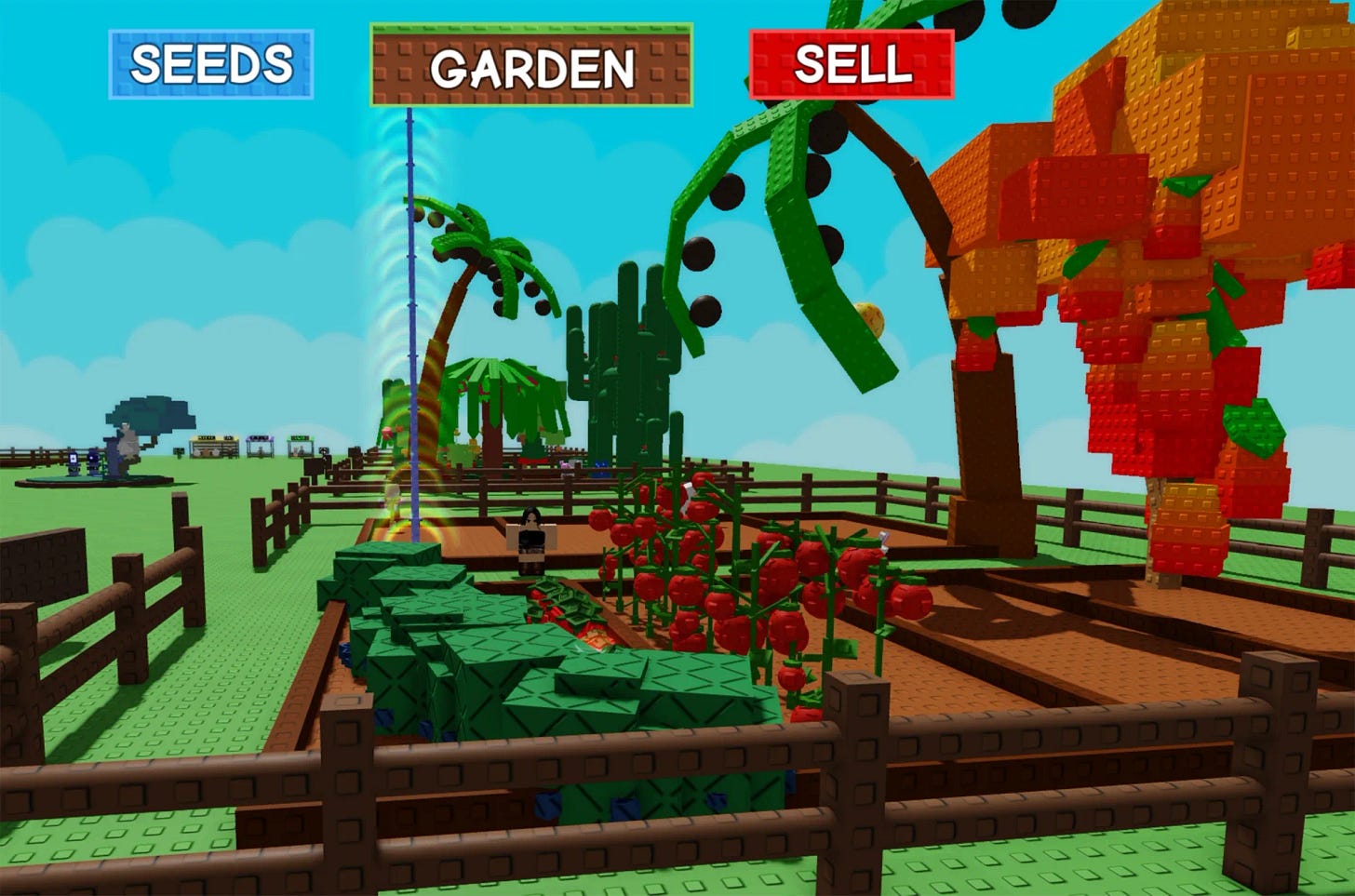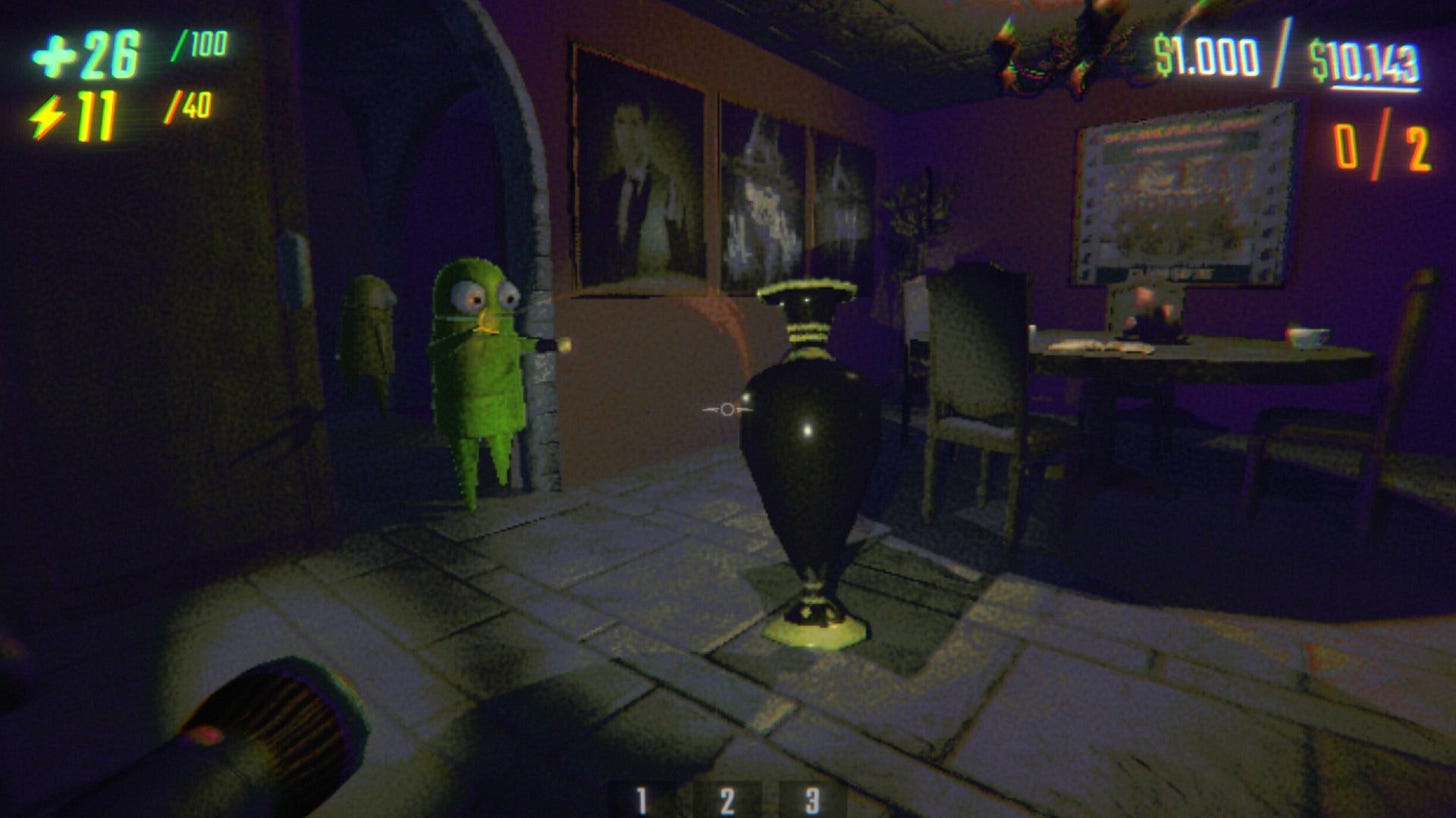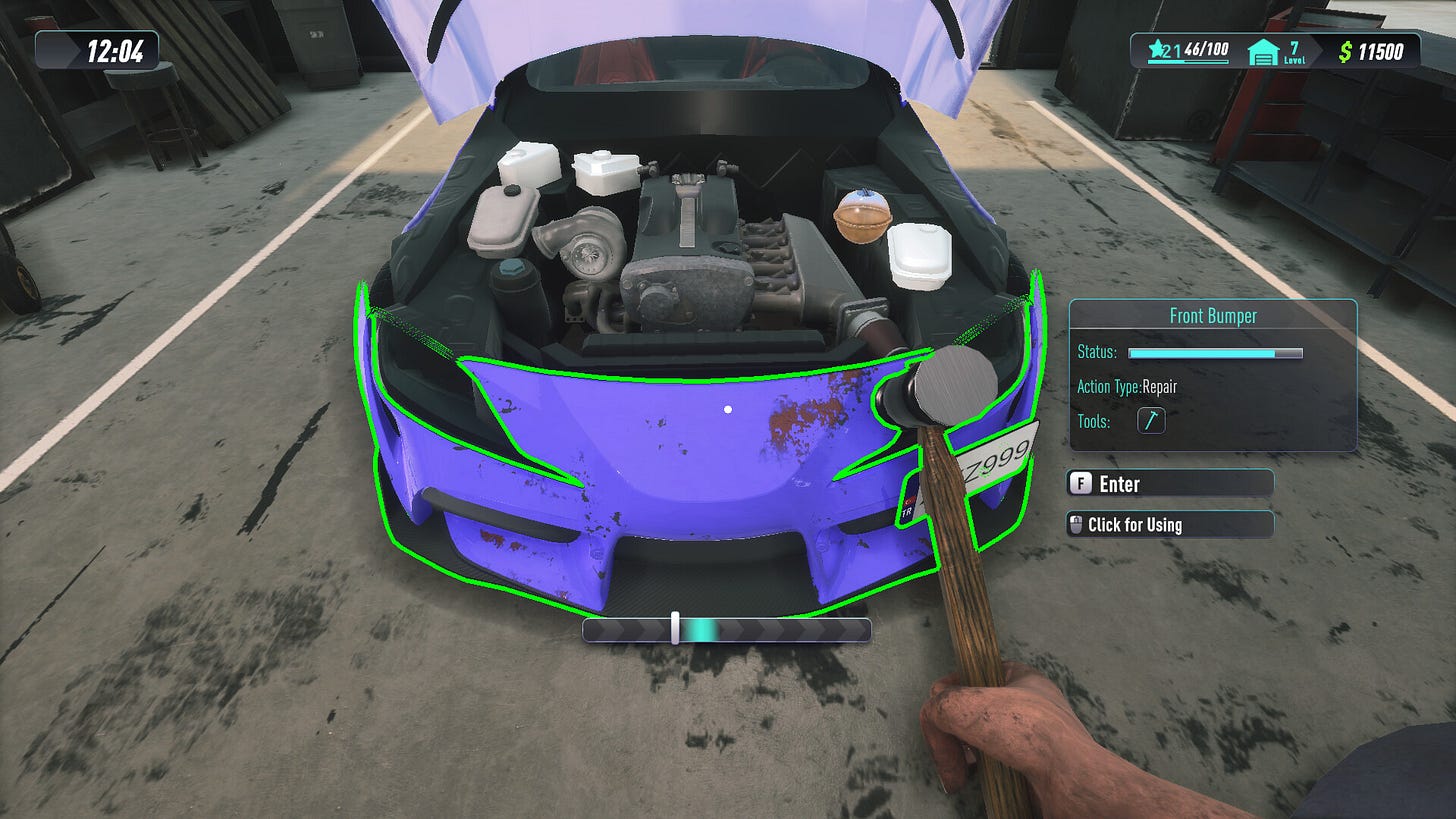Economics determine game aesthetics
low-cost and high-impact production strategies
A quick note: I post weekly on Monday (this one is landing early due to labor day weekend) with short-form essays like the one below that will continue to be free for all subscribers. I’m also introducing new content for paid subscribers in the form of Wishlist Rundowns, which can be found below the paywall on this post and on all future ones.
Each week, I will highlight three upcoming indie games that have reached a significant number of wishlists on Steam before launch. I give my take on why these games are hyped and why they’re suggestive of larger trends on Steam. If you’re an indie developer, studio, publisher, student, aspiring developer, or just a curious gamer and want to have a better grasp of what’s going on with indie games on Steam, please consider subscribing for just $5 per month or $50 per year.
Paid subscribers also have access to Steam Reports, my in-depth market analysis and trend forecasting reports that highlight emerging microgenres on Steam.
The cost of game asset production is seen as one of the primary bottlenecks for growth in the modern games industry. This can be observed throughout the history of the console market, where each hardware generation brings with it new graphics capabilities enabled by cheaper and more powerful chips. Hardcore gamers increasingly demand higher-definition, higher-resolution, and ultra-realistic graphics. In turn, game budgets increase as more and more specially-trained artists are needed to create all the stuff to fill the average game.
The younger and more evasive cousin of the games industry, the metaverse, is also bottlenecked by the cost of asset production. But metaverse-hopeful games like Fortnite and Roblox have found a solution in the form of user-generated content (UGC). Recent hits like the record-breaking Grow A Garden on Roblox demonstrate that a new generation of developers and players have a very different relationship to asset quality and fidelity compared to typical hardcore gamers of years past.
For games built around user-generated content, it's the quantity, not the quality, of the assets that matters. The aesthetics of user-generated content in Roblox and Fortnite are a direct result of this dynamic. Players create assets with simplified 3D tools, rather than trained artists using expensive, hard-to-master 3D modeling software. Contrary to popular belief, art style is downstream of technical constraints and economic conditions. In an interview with Mitch Lasky and Blake Robbins on the art and business of gaming, Acquired co-host Ben Gilbert explains:
I think the common narrative is, video games are something created by creative geniuses, a Miyamoto type person, and then the business models rearranged around the creative vision having consumers that flocked to it. I think, already, you're introducing this interesting wedge of, actually, there are very clear business models that guide where the water of creativity can flow. That has been, for the last 50 years, what has defined the video game industry, not the other way around.
Ben Thompson succinctly outlines this history and connects it to gaming’s more troubled cousin, virtual reality, in DALL-E, the Metaverse, and Zero Marginal Content, saying:
Soon games included motion as you navigated a sprite through a 2D world; 3D followed, and most of the last 25 years has been about making 3D games ever more realistic. Nearly all of those games, though, are 3D images on 2D screens; virtual reality offers the illusion of being inside the game itself.
Still, this evolution has had challenges: creating ever more realistic 3D games means creating ever more realistic image textures to decorate all of those polygons; this problem is only magnified in virtual reality. This is one of the reasons even open-world games are ultimately limited in scope, and gameplay is largely deterministic: it is through knowing where you are going, and all of your options to get there, that developers can create all of the assets necessary to deliver an immersive experience.
Indie game developers must be especially creative in contending with the cost of asset production. For a bootstrapped indie, that is, an independent developer or studio not funded by a publisher or investor, cost comes in the form of time spent rather than cash. The more time that passes the riskier your project becomes. One of the most effective ways to de-risk your project is to set strict time constraints as I outlined recently in Six months or bust.
As a business savvy indie your job is to keep your costs low and your ideas high-impact. This immediately rules out many game genres that are especially costly in the form of production time like battle royale shooters, open world survival craft, and colony sims; and game genres that require extremely bespoke art styles to stand out like 2D platformers.
Horror, on the other hand, is one of a few genres that is especially well-suited for a low-cost, high-impact approach. Horror games tap directly into player emotions. Games in other genres have to put in significant work to make a player really feel something. While it still requires artistic finesse, it’s technically a lot easier to spook someone with a jump scare than it is to create a thousands of hand drawn assets as seen in Hollow Knight and the much anticipated sequel Silksong. With the right combination of environment design, lighting, atmosphere, and sound fx, a single looping hallway can have a player shaking in their boots in a matter of minutes.
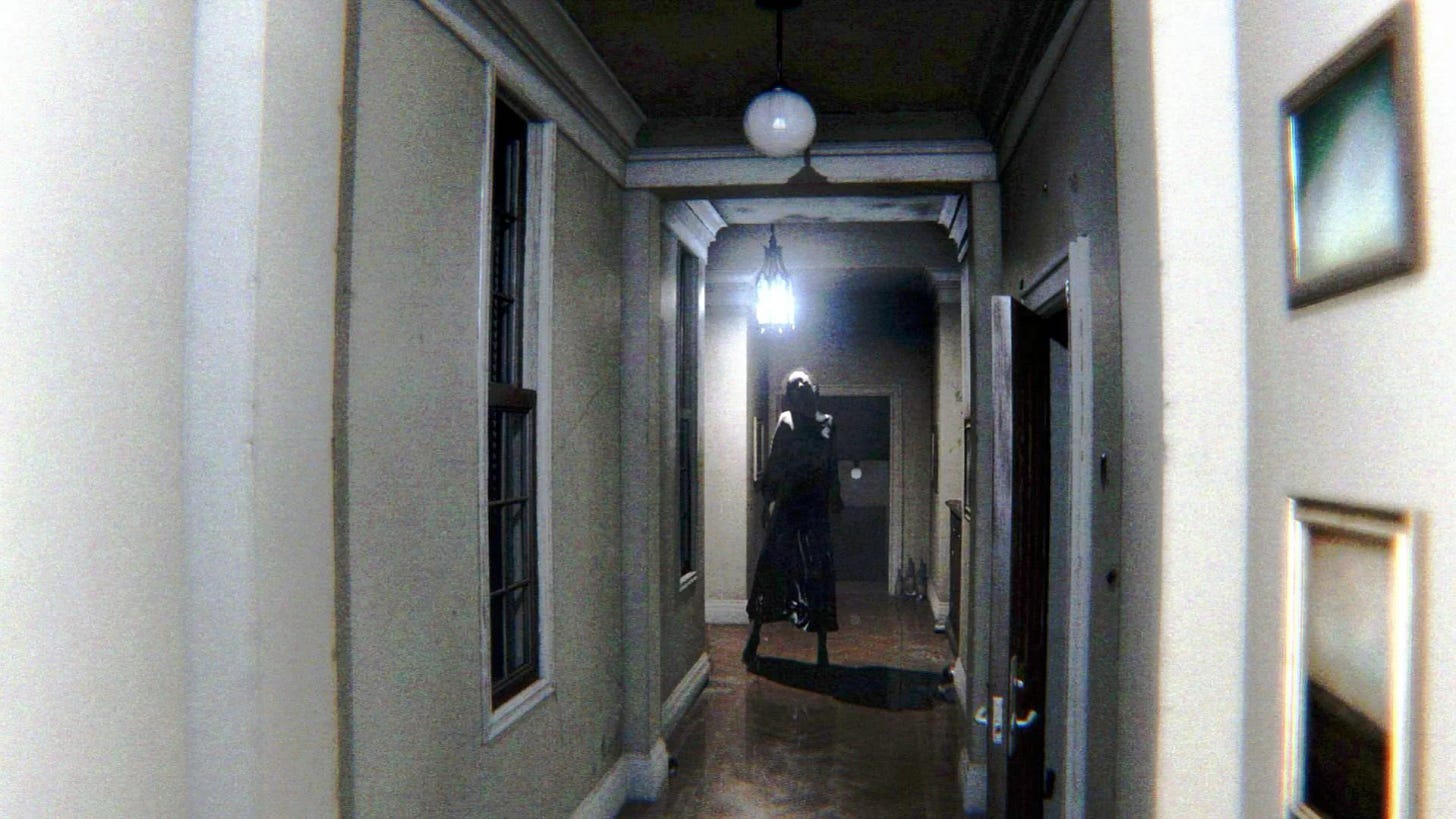
The low-cost, high-impact nature of horror can be seen outside of the games industry as well. The horror film production company Blumhouse was founded on this very principle. A recent Wall Street Journal article on Blumhouse describes this saying:
Jason Blum wasn’t drawn to making horror movies because of the thrills. He liked that the genre was low-cost.
“You can’t make an inexpensive action movie that will stand up,” said Blum, 56. His production company Blumhouse turns 15 this year and has been responsible for over $9 billion in global box-office earnings through movies and franchises including “The Purge,” “Paranormal Activity” and “Get Out.”
Blum says his business model—keeping costs as low as possible while giving directors and actors equity in their movies’ box office sucess—allows him and his collaborators to experiment. “To have so much money at risk clouds my thinking, probably because I’m so cheap,” Blum said. Plus, studios still spend to market his low-cost films with big campaigns.
As an indie developer you’re in a special position to fulfill demand not through more high-cost content, but through less content produced at a drastically lower cost. Your game concept and art style are the biggest determinants for your cost.
Our small team of three experienced this recently while prototyping one of our new game ideas. We initially set out to create a short horror game inspired by PT with an ultra-realistic art style leveraging all the new tools in Unreal Engine 5. We quickly realized this approach wasn’t going to work. The time it took for us to create a single asset, from modeling to UV unwrapping to texturing, to scene placement, and lighting was absurd on our low (nonexistent) budget. We’re trying to create a game in a few months not years.
This led me to understand that, as a bootstrapped indie, you have two options:
Use asset packs
Build an aesthetic around your low cost production process
You’d be surprised at how many games take the former approach. The Cabin Factory is a great example of how developers can leverage asset packs to create a unique, appealing, and marketable game. Most if not all of the assets in the game are sourced from asset stores (see screenshots below).

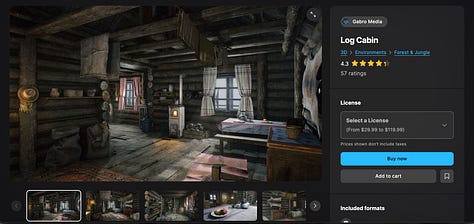
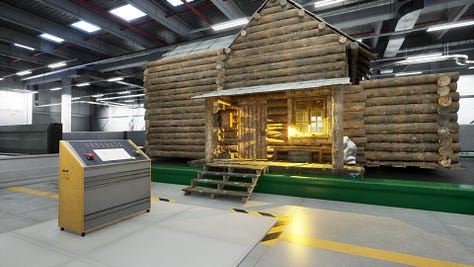
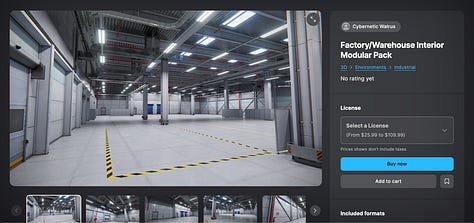

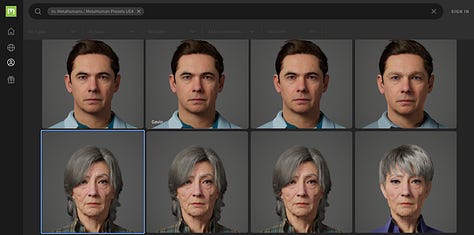
The second approach, building an aesthetic around a low cost production process, allows for a bit more creative freedom. Games like R.E.P.O. and Lethal Company are perfect examples of this. R.E.P.O is filled with low poly assets with low texture resolutions and exposed UV seams. Look closely and you’ll notice that many assets have drastically different texel densities. The developers clearly valued speed over perfection when creating their 3D environments and props. And because the game has a coherent and well define art style, it all fits together fluidly, nothing feels out of place.
Now, onto this week’s wishlist rundown…
Wishlist Rundown 001
The job simulator genre continues to see a steady stream of new releases. I wrote about the meditative appeal of the genre in my recent post Another day on the job simulator. Car Service Simulator by Turkish studio Red Axe is fairly self explanatory, it follows the typical Playway-style simulator gameplay loop of repair→deliver→upgrade. It would be easy to assume that the job simulator genre as a whole is oversaturated, but even hyper-specific subcategories like this one have multiple successful entrants. Car Dealer Simulator released in May 2025 grossed an estimated $3.9M, Car Mechanic Simulator 2021 released in August 2021 grossed an estimated $41M, and My Summer Car released in January 2025 grossed an estimated $26M.
Keep reading with a 7-day free trial
Subscribe to 9000 Dimensions to keep reading this post and get 7 days of free access to the full post archives.


